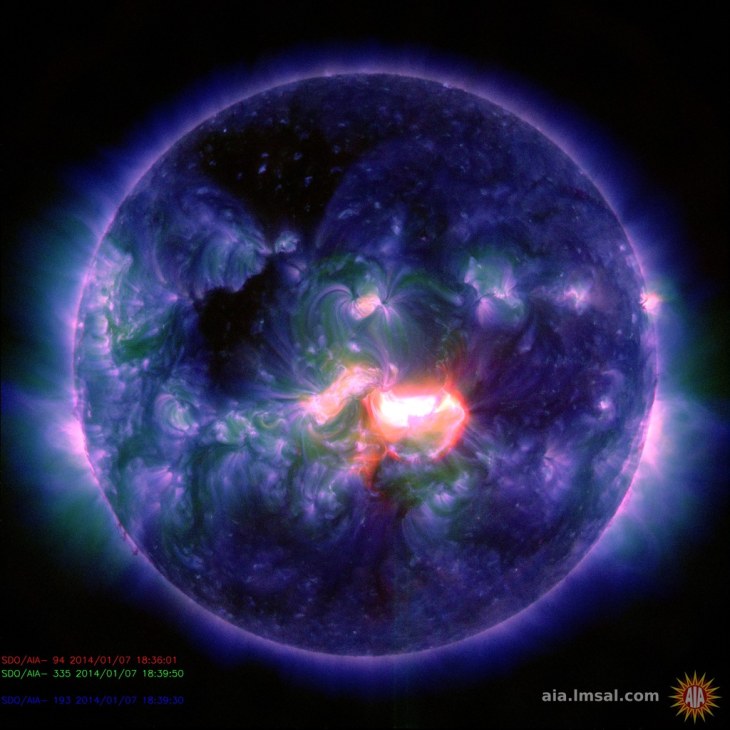Opmmur
Time Travel Professor
- Messages
- 5,049
October 21, 2012




JUST IN: Solar Activity Ramps Up - Warning Issued

by Mitch Battros - Earth Changes Media
Solar activity has increased to active during the past 24 hours, featuring a long duration M9.1 flare and six C flares.
The M9.1 flare was released by sunspot region 1598 on the east limb of the Sun and peaked at 18:14 UT on October 20th. A high-speed shock wave registered 516 kilometers per second (320 miles per second) observed at 18:15 UT. An associated CME was observed by LASCO C2 at 19:00 UT, but is not directed towards Earth.

Earlier today sunspot region 1596 produced a M1.3 (2003UT), C7.8 (0316UT), and C5.6 (0534UT). Both regions 1596 and 1598 maintain potential for further isolated M-class to X-class activity.
Solar wind speed is expected to increase slightly days one and two under the influence of a coronal hole wind stream. NASA and NOAA has issued a WARNING for high flying aircraft, the ISS, NSSO and NSTAC due to an increased possibility of satellite deep dielectric discharge.

In a flux of high energy charged particles, they penetrate the spacecraft or satellite's outer surface and bury themselves in dielectric materials such as circuit boards and the insulation in coaxial cables. The buildup of charge will continue until the dielectric strength of the material is exceeded, when a sudden electrical discharge will occur. This miniature lightning stroke can cause permanent damage in the associated or nearby circuitry.

Watch for increased extreme weather events which include earthquake, volcano, tornado, and cyclone activity over the next 48 to 72 hours.







